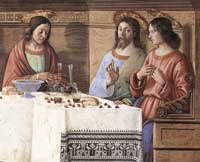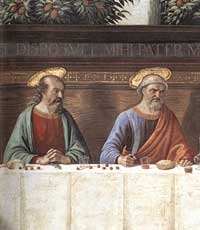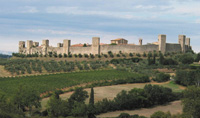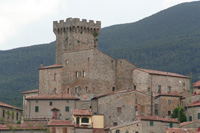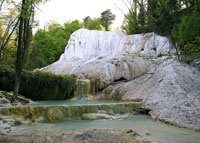| |
|
| |
|
|
|
|
|
|
| |
 |
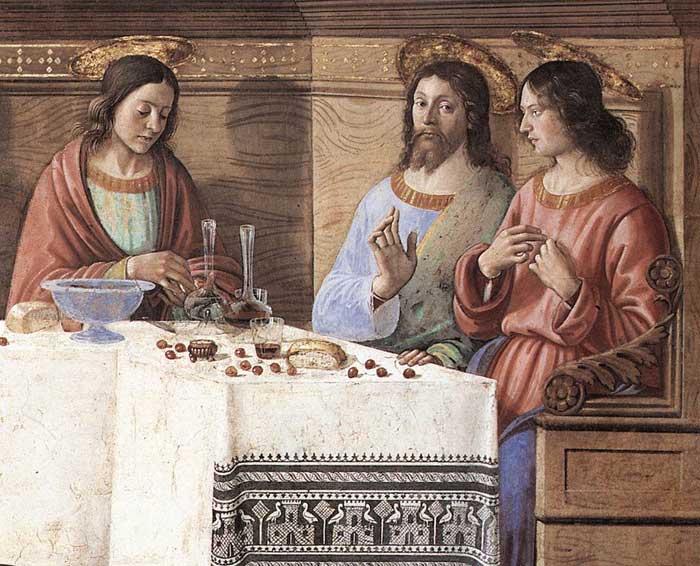 |
| Domenice Ghirlandaio, Last Supper (detail), c. 1486, fresco, 400 x 800 cm, San Marco, Florence
|
|
 |
 |
| |
|
|
|
| |
|
|
|
|
| |
|
Domenico Ghirlandaio painted the scene of the Last Supper on several occasions within the space of a few years. In all three works of his that still remain, the basic arrangement is the same as that in the fresco by Andrea del Castagno in the Florentine Cenacolo di Sant'Apollonia dating from about 1450. The disciples are sitting at a long table in front of a rear wall that runs parallel to the picture plan. Christ is sitting in the centre, and His favourite disciple John is leaning sadly against Him. To the right of Christ, in the place of honour, is the chief Apostle, Peter. Judas the traitor is the only one to be separated from the others: he is seated in front of the table.
|
|
|
|
| |
|
|
|
|
Domenico Ghirlandaio, Last Supper in Abbazia di San Michele Arcangelo a Passignano, Tavernelle Val di Pesa
|
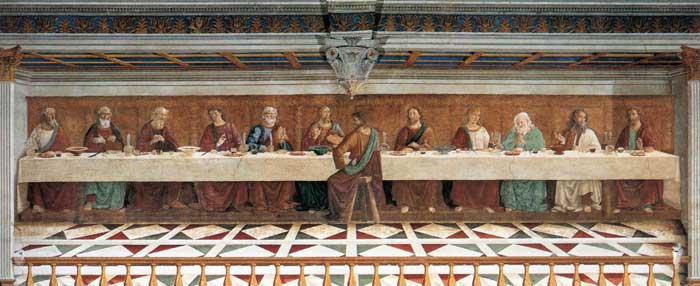 |
Domenice Ghirlandaio, Last Supper, 1476, fresco, Abbazia di San Michele Arcangelo a Passignano, Tavernelle Val di Pesa
|
The earliest example of the Last Supper was painted in 1476 by Ghirlandaio in the abbey of San Michele Arcangelo a Passignano (in Tavernelle Val di Pesa, near Florence)[1]. This is strongly influenced by Andrea del Castagno. The Apostles and Christ are sitting together in a room with a flat ceiling that appears to be too low. Judas is sitting opposite Christ on a three-legged stool in front of the laid table. The figures are set back some distance from us, to a depth of three large floor tiles. The various emotions of the Apostles are indicated by stiff hand movements that scarcely seem alive and express little of the character of the individuals.
Art in Tuscany | Andrea del Castagno, Last Supper, 1447
"In the centre of the painting stand the two main actors of the great drama: Judas, aware of his betrayal, with his stance, his look, his hair in disorder, expresses his gloomy solitude; Christ, with an expression of religious solemnity, looks towards the table with his right hand raised as a sign of blessing and seems almost comforted by the presence of John who, in that moment, stands with his head resting against the Lord’s chest". [P.N. Vasaturo, 1989].
|
|

Andrea del Castagno, Last Supper in the Florentine Cenacolo di Sant'Apollonia |
Domenico Ghirlandaio, Last Supper in San Marco, Florence
|
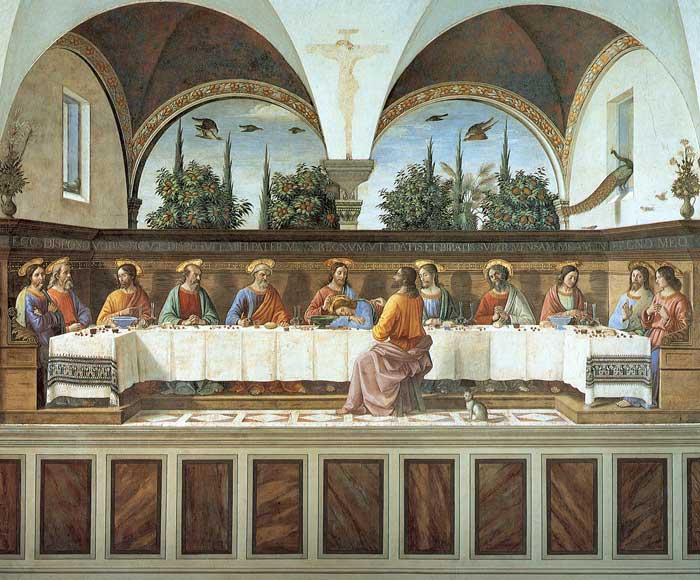 |
Domenice Ghirlandaio, Last Supper, c. 1486, fresco, 400 x 800 cm, San Marco, Florence
|
The last surviving version of Ghirlandaio's Last Supper is in the refectory of the hostel of the San Marco convent.[2]
It is pleasing to observe that chronicler's narration of his city and the rich bourgeois inhabitants who enlivened it in the middle of the 15th century. It is typical of the work of Ghirlandaio, who certainly sketched out the drawing and, at times, participated directly in its execution. Rendered without resorting to dramatic force, it reveals a serenity and great faithfulness to life. Note the impassive Judas, seated in front of Jesus and almost conversing with him. The supper takes place at a large table with a bright tablecloth, embroidered at the edges. Nothing about it is casual; the crockery, the decanters, the knives, the bread and the cherries, are carefully arranged in front of every guest.
With customary ease, Ghirlandaio fills the lunettes with large trees and birds in flight against a bright sky whose light is reflected onto the right-hand wall where an open window frames a perching peacock. The rest is in shadow. Two flower-displays complete the frame which encloses the space. A cat, waiting patiently for a hoped-for scrap of meat, lends a touch of intimacy and domesticity that is rarely lacking in Ghirlandaio.
The apostles react in a variety of ways to Christ's words that He will be betrayed. While the disciple on the right appears to be asking: "It is me, Lord, who will betray you?", the one on the left is gazing sadly at his hands. The artist offers additional proof of his sensitive powers of observation through his playful depiction of the glass vessels on the table: through one glass carafe, we can see hands resting on the table behind, and through another glass we can see a carafe. |
|
|
|
|
|
Domenico Ghirlandaio, Last Supper in the Chiesa di Ognissanti, Florence
|
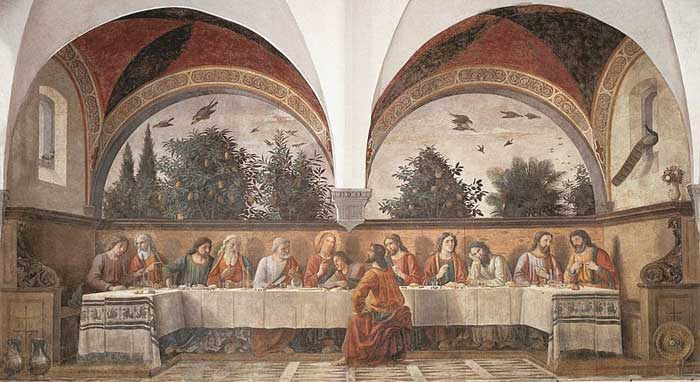 |
Domenice Ghirlandaio, Last Supper,1480, fresco, 400 x 880 cm, Ognissanti, Florence
|
This version of the Last Supper, executed in the refectory of the convent of the Ognissanti [3] was executed in the same year as the St Jerome in the church. It is a famous example of the Tuscan tradition of depicting the Last Supper in monastic refectories.
The scene is ample and characterized by vivid, animated lines, as was his style, but it draws on the structural organization that was characteristic of Andrea del Castagno. The spirit is typical of Ghirlandaio, who as ever remains rather psychologically superficial and uninterested in any form of dramatic expression. Jesus and the disciples are not particularly characterized and seem peaceful and rather at ease; even Judas, who though seated on his own in front of Christ, according to tradition, has a serene countenance and composed posture. The figures are sitting isolated next to each other in a row, and are not connected in any inner way. The epochal step taken by Leonardo with the communicating figures in his version in the refectory of the Santa Maria delle Grazie, Milan, becomes evident when comparing the two paintings. However, the overall effect is agreeable and there are some ingenious touches.
The lunettes offer an easy opportunity to the expert painter - a view of trees in a Tuscan garden beyond the wall; fruit-trees, cypresses, and an isolated palm-tree that appears rather incongruous in the surroundings. To the right, a peacock perches on a windowsill, while other birds flutter around in the crystalline air. The table is covered by a white tablecloth with blue embroidery. Plates, decanters, glasses, saltcellars and knives are carefully arranged in front of each table-guest, as are the bread and cherries. It might even be the realistic and serene representation of a Florentine table of the period.
|
|
|
| |
|

Giorgio Vasari's Lives of the Artists | Domenico Ghirlandaio, painter of Florence

[1] The Abbey of San Michele Arcangelo, is a monastery of the Vallombrosana Congregation, it is situated in Passignano, a small village near Tavarnelle Val di Pesa.
The dedication to San Michele Arcangelo suggests the era of the Lombard period for the particular cult due to the 'warrior angel "by the Germanic people.
The monastery already adopted the vallombrosana rule in the eleventh century by Giovanni Gualberto, who died here in 1073.
From the outside, the magnificent monastery is more like a fortress than a monastery.
The defense walls datie back to '400, but in some points you can backdate the thirteenth century. In the refectory of the monastery there is an interesting Ultima Cena of Davide and Domenico Ghirlandaio.
Suppressed the monastery in the late nineteenth century, the complex became a private villa and was converted in a neo-Gothic castle.
In 1986 the monks of Vallombrosa monastery regained its possession.
Website | www.badia-a-passignano.com
[2] San Marco is the name of religious complex in Florence, Italy. It comprises a church and a convent. The convent, which is now a museum, has three claims to fame: during the 15th century it was home to two famous Dominicans, the painter Fra Angelico and the preacher, Girolamo Savonarola. Also housed at the convent is a famous collection of manuscripts in a library built by Michelozzo.
The present convent occupies the site where a Vallombrosan monastery existed in the 12th century, which later passed to Benedictine monks of the Silvestrine line. In 1435 the Benedictines were replaced by Dominicans from the Convent of San Domenico in Fiesole. Two years later, they appealed to Cosimo de' Medici the Elder, who lived nearby in the family palace, now known as the Palazzo Medici-Riccardi, to fund the renovation of the entire complex. The works were entrusted to Michelozzo. Each cell of the monks cloister and many other walls were decorated by Fra Angelico in collaboration with others, including Benozzo Gozzoli. Cosimo de' Medici had a cell at the convent for his personal retreat.
San Marco is famous as the seat of Girolamo Savonarola's discourses during his short spiritual rule in Florence in the late 15th century.
The church
The church
was consecrated in 1443, in the presence of Pope Eugene IV. It has a single nave with side chapels designed in the late 16th century by Giambologna, and housing paintings from the 16th–17th centuries. In the late 17th century the tribune and the carved ceiling were also realized. A further renovation was carried on in 1678 by Pier Francesco Silvani. The façade, in Neo-Classical style, was built in 1777–1778.
Among the artworks, the most ancient is a 14th century crucifix in the counter-façade. The crucifix on the high altar is by Angelico (1425–1428). In the first altar to the right is St. Thomas Praying by Santi di Tito from 1593, while on the second altar is a Madonna with Saints by Fra Bartolomeo.
Giambologna completed the Cappella di Sant'Antonino (also known as Salviati Chapel) in May 1589. The Salviati family had been linked by marriage to the Medici (Pope Leo XI was the son of Francesca Salviati, the daughter of Giacomo Salviati and Lucrezia de' Medici. The interior was decorated in fresco with a Translation and Funeral of St. Antonino Perozzi by Domenico Passignano. The dome of the chapel is by Bernardino Poccetti, also author of frescoes in the Sacrament Chapel. The latter also has canvases by Santi di Tito, Crespi, Francesco Morandini, Jacopo da Empoli, and Francesco Curradi.
Significant figures buried in San Marco include Giovanni Pico della Mirandola and the poet Angelo Poliziano.
The convent
Michelozzo built for Cosimo de' Medici a sober, though comfortable, Renaissance edifice, including the elegant cloister and, above all, the Library, which, under the reign of Lorenzo il Magnifico became one of the favourite meeting points for Florentine humanists such as Poliziano and Pico della Mirandola, who could conveniently consult here texts in Latin and Greek language.
The convent was stripped from the Dominicans in 1808, during the Napoleonic Wars, and again in 1866, when it became a possession of the state.
The convent is now home to the Museo Nazionale di San Marco. The entrance to the museum is from the so-called Cloister of St. Antoninus, frescoed by Bernardino Poccetti in the 16th-17th century.
The museum houses the major collection of works by Fra Angelico. Panel paintings included the Deposition executed for Palla Strozzi, the Altarpiece of San Marco commissioned by the Medici in 1440, and a tabernacle (1433–1434) executed in collaboration with Lorenzo Ghiberti. There are also a great number of small frescoes by Angelico and his assistants in the monastic cells and a number of larger frescoes including the much-reproduced Annunciation. His masterwork is the complex Crucifixion in the Capitular Hall, finished in 1442.
The museum exhibits works by other artists including Domenico Ghirlandaio, a reduced scale version of the Last Supper in the church of Ognissanti; Alesso Baldovinetti, Giovanni Antonio Sogliani and Fra Bartolomeo. The cells where Girolamo Savonarola lived can also be visited.
Art in Tuscany |
Fra Angelico | Frescoes in the Convento di San Marco (1438-50)
Tuscany | San Marco in Firenze
[3] The Church of Ognissanti (All-Saints Church) is a Franciscan church founded by the lay order of the Umiliati, a Benedictine order particularly skilled in manufacturing wool.
It was completed during the 1250s, but almost completely rebuilt on the Baroque designs of Bartolomeo Pettirossi, in 1627. Ognissanti was among the first examples of Baroque architecture to be built in Florence.
The Umiliati developed a strong positive relationship with the Florentine people. Many works of art, dedicated by various Florentines, began to accumulate in their once very simple church. Giotto's celebrated Madonna and Child with angels, now in the Uffizi, was painted for the high altar in 1310. During the 16th century, the Franciscan order assumed control of the church in 1571 from the Umiliati and brought works of their own, including precious relics such as the robe Saint Francis of Assisi wore.
Famous works inside the church include quattrocento frescoes in the nave chapels, by Ghirlandaio and Botticelli (who is buried in the church) and Madonna della Misericordia, also by Ghirlandaio. Perhaps the greatest of Ognissanti's frescoes is Ghirlandaio's Last Supper in the refectory between the two cloisters, a work with which Leonardo was intimately familiar. Over the door to the sacristy is a crucifix in wood by Veit Stoss.
|

Holiday accomodation in Tuscany | Podere Santa Pia | Artist and writer's residency
|
|
|

. |
|
|
Podere Santa Pia |
|
Podere Santa Pia, garden view, April |
|
View from Podere Santa Pia
on the coast and Corsica |
| |
|
|
|
|
|
|
|
|
|
Monteriggioni |
|
Arcidosso
|
|
Bagni San Filippo |
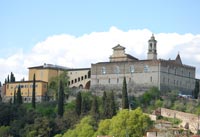 |
|
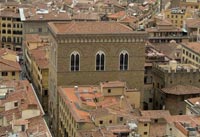 |
|
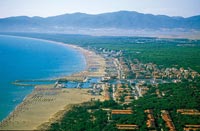 |
Certosa del Galluzzo (Firenze) |
|
Florence, Orsanmichele |
|
Beaches in Tuscany |
| |
|
|
|
|
This page uses material from the Wikipedia article Domenico Ghirlandaio, published under the GNU Free Documentation License.
Wikimedia Commons has media related to Domenico Ghirlandaio.
|
|
|
| |
|
|
|
| |
|
|
|
| |
|
|
|
| |
|
|
|
| |
|
|
|
| |
|
|
|









